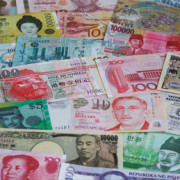Archive | Finance sector development RSS feed for this section
Finance sector development
 Finance sector development
Finance sector development
 Finance sector development
Finance sector development
 Finance sector development
Finance sector development
 Finance sector development
Finance sector development
 Finance sector development
Finance sector development
 Finance sector development
Finance sector development
 Finance sector development
Finance sector development
 Finance sector development
Finance sector development
 Finance sector development
Finance sector development
Avoiding a household-debt-driven crisis in Korea

The economy of the Republic of Korea (henceforth Korea) has been on a steady growth path despite the global financial and eurozone crises. Recently, Fitch and S&P, the global credit rating agencies, upgraded Korea’s sovereign credit rating by one notch. Fitch’s rating for Korea, AA-, is the fourth-highest rating on its rating scale and a notch higher than those of the PRC and Japan. Notwithstanding these positive signs, Korea’s economy faces many internal and external challenges. One of the most serious is excessive household debt. Korea’s household debt has increased drastically since 2000. For the past 12 years, household debt has increased by an average of 13.3% every year, far in excess of the average annual nominal GDP growth rate of 6.2% during the same period.
Lessons for the eurozone from Asia

In analysing the European financial crisis, Asia’s experience with the 1997 Asian financial crisis is a useful point of reference. After the forced devaluation of the Thai baht, encouraged by the People’s Republic of China (PRC) and Japan, Thailand was compelled to accept the IMF-imposed austerity programs. As part of the contagion that followed the baht crisis, Indonesia and the Republic of Korea also accepted the IMF program. As the IMF’s prescriptions reduced aggregate demand and contained no “pro-growth” elements, they worsened the crisis in these Asian countries. In contrast, Malaysia rejected the IMF’s prescriptions. The different experiences of these crisis-hit Asian economies led to a change in thinking on the productiveness of “straight” austerity programs as a response to the financial crises. Austerity policies were relaxed and pro-growth policies introduced, which in combination, helped Asia to recover from its financial crisis.
Myanmar has much to learn from Viet Nam’s exchange rate reforms

Myanmar’s exchange rate reform is a fundamental change, but it is not unique. A striking parallel can be found in Viet Nam’s move in the late 1980s to unify its multiple exchange rates into a single rate and its corresponding announcement of exchange rate management through a managed float, just as Myanmar is doing now. The experience of Viet Nam in reforming its exchange rate system—both good and bad—offers valuable lessons for Myanmar. The aim of this piece is to try to draw out some of these lessons. The objective is not to recommend that Myanmar should uncritically follow the lessons from the Viet Nam experience, but that the country should adopt these lessons to its own circumstances.
US zero interest rates provoke world monetary instability and constrict the US economy

The international dollar standard is malfunctioning. The Fed’s reduction of the interest rate on Federal Funds to virtually zero in December 2008 (a move that was followed by major European central banks) exacerbated the wide interest rate differentials with emerging markets and provoked world monetary instability by inducing massive hot money outflows by carry traders into Asia and Latin America. The disruption could be partially justified if it had helped the United States recover from the 2008–2009 financial crisis. However, evidence suggests otherwise. Speculative money flooding into emerging markets by “carry traders” causes local currencies to be overvalued.
Should a resumption of US quantitative easing worry emerging Asia?

Two episodes of quantitative easing (QE) by the United States (US) Federal Reserve Bank (Fed) since early 2009 aroused widespread concerns in emerging Asia and elsewhere because of the possibility that they would weaken the US dollar (so-called “currency wars”) and stimulate capital inflows in emerging economies that might lead to increased inflationary pressures and asset price bubbles. For example, the vice minister of finance of the People’s Republic of China (PRC), Zhu Guangyao, said on 18 November 2010 that “As a major reserve currency issuer, for the US to launch a second round of quantitative easing at this time, we feel that it did not recognize its responsibility to stabilize global markets and did not think about the impact of excessive liquidity on emerging markets” (Reuters 2010).
Reforming the global financial architecture

The recent global financial crisis has renewed concerns about the inherent instability of the current international monetary system in which the world’s demands for asset or liquidity are met predominantly using the currency of one country, the United States dollar. If the supply of the global currency is inadequate to support global trade, the world faces deflationary risks. However, since the country issuing the global currency has the privilege of borrowing abroad in its own currency cheaply, its borrowing and, hence the supply of global currency, may become excessive. This may eventually become unsustainable, and may have significant systemic implications for the rest of the world, as witnessed in the global financial crisis.
Can internationalization of the renminbi succeed where internationalization of the yen failed?

Since the second half of the 1990s, Japan has tried to promote the use of the yen as an international currency but has made little progress so far. Now, following in Japan’s footsteps, the People’s Republic of China (PRC) is promoting the internationalization of the renminbi. It would do well to consider why Japan’s attempt at internationalizing the yen has failed. Until the Asian financial crisis in the second half of the 1990s, Japan was reluctant to promote the internationalization of the yen, fearing that capital flows could destabilize the economy and render monetary policy ineffective, a problem widely considered to be the major cost for a country promoting the international use of its currency.
Fostering exchange rate coordination: the role of an Asian Currency Unit

Over the past few decades East Asia has become increasingly intertwined economically as the share of interregional trade in total trade has increased sharply across most economies, driven by regional supply chains and production networks. These production networks have also fostered greater investment links, with the production process being broken down into subprocesses within a particular industry. The high degree of economic integration indicates that there may be a case for exchange rate coordination, as exchange rate misalignments may result in loss of competitiveness for a country, possibly leading to an increase in protectionism, which in turn could promote a round of beggar-thy-neighbor devaluations. Large swings in bilateral exchange rates could influence decisions about the location of new and existing investments. In contrast, greater stability in exchange rates would support investment by increasing price transparency and reducing currency-related hedging costs for companies. Finally, sharp exchange rate movements in one currency could affect another country’s ability to maintain a particular exchange rate regime.
What makes an effective international financial safety net?

The global financial crisis showed the need for a large-scale and effective international financial safety net (IFSN). Although East Asia has had a regional financial arrangement (RFA) since 2000 (the Chiang Mai Initiative1), it was not tapped during the global financial crisis for a variety of reasons. Our recent study examines the requirements for an effective IFSN. It should have adequate resources to deal with multiple crises, be capable of making a rapid and flexible response, and not be encumbered by historical impediments such as the IMF stigma that would limit its acceptance by recipient countries. Oversight of the IFSN needs to be based on cooperation between global and regional forums, for example, in the case of Asia, the G20 and ASEAN+3.
East Asia can learn from Europe’s mistakes
The current European crisis has highlighted the policy mistakes that were made in the process of European financial and monetary integration. It has exposed major deficits in the eurozone’s institutional framework, including insufficient macroeconomic policy coordination and the lack of a crisis response mechanism (which then had to be negotiated in the midst of crisis). One of the major failures that led to the current European predicament was that national and European policymakers allowed the build-up of huge macroeconomic imbalances within the eurozone. Wages and prices in southern “periphery” countries (with Ireland being an honorary member of the south) rose much more quickly than in the northern “core” countries such as Germany. The resulting loss of economic competitiveness of the periphery countries has led to a growth crisis that fed into a sovereign debt crisis after government finances were severely strained during the global financial crisis.


Search
Subscribe / Connect to Asia Pathways
Subjects
- Agriculture and natural resources
- Blog
- Capacity development
- Climate change
- Economics
- Education
- Energy
- Environment
- Finance sector development
- Gender
- Governance and public sector management
- Health
- Industry and trade
- Information and Communications Technology
- Infrastructure
- Miscellaneous
- Population
- Poverty
- Private sector development
- Regional cooperation and integration
- Sanitation
- Social development and protection
- Transport
- Uncategorized
- Urban development
- Video Blog
- Water
Recent Posts
- Unraveling the Health Risks of Climate Change
- Linking Farmers to Markets Through Agricultural Cooperatives and E-Commerce in Asia
- How Can Governments Support Electricity Distribution to Achieve Net Zero in Asia?
- Promoting Corporate Climate Action Through Greenhouse Gas Accounting
- Evaluating G7 Commitments on Climate Change, Health, Well-Being, and Agriculture




Recent Comments